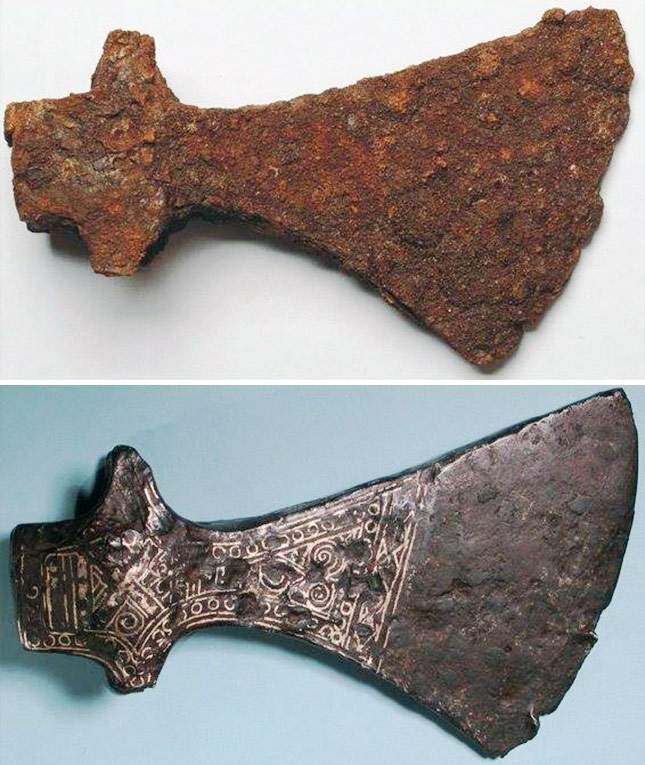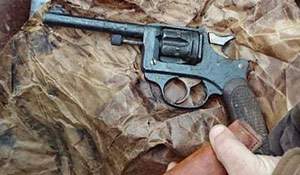“You shouldn’t have cleaned that coin – you rubbed half the price off…” Do you know how to clean finds? Let’s take a look at one example: an amazing transformation of the item from rusty metal piece into a real Viking axe. The key point is that you shouldn’t rap your find against a shovel right after digging it up, and everything is going to be alright.












what is this electrolysis ? care to explain how he cleaned up.
WOW! I sure would like to learn more.
How to clean it ???
To clean the rust off old iron, try a mix of one part molasses to ten part water, keep checking your finds every two days.
Molasses and water? Thats a new one on me….how does it work…..what are the instructions?
Regards
Jim
Hello .. (electrolysis)
1 bowl of fresh water (temp is equal, not to small), both parts (object and piece of stainless steel) has to be under water. 1 piece of stainless steel (for example drainage sieve from sink). 1 batterie charger (so strong as it can be, better with steps). Now put Natron-salt into the water (see below), it transports the Fe-Ions from the Anode (black) to the Katode (red). The first microscopical layer of original iron goes and takes the rust away. You have to clean the object into bright iron on an good location and than do a copper-wire (2 mm) around. Second copper-wire around the blank stainless piece. Black (minus) to the object, red to the stainless piece. There must be good contact to the blank material. Put both into the water. Distance 1 hand or bit more. Now turn loader on. If bubbles are visible contact is good, if not retry (cleaning object, new wire). The Natron is consumed through electrolysis, refill it into a few hours (1-2 teaspoons or 6-8 pills for 1,5 ltr). If the work begins the charger is quiet, to the end it becomes louder. Control the effect all 2-4 hours, to avoid deep notches. Best you try it first with an simple piece of rusty iron to learn. For an axe calculate 12-14 hours. Don`t leave your home (fire protection). If the brute is k, take it out, and do some work with rasp and wet-sandpaper (600, 1000, 5000). The deep black layer is good patina, try to hold it. Don`t work with an steel brush, deep erosion occurs.Than dry it very good, best 3 days (heating or red light). Than do it in hot paraffin or other restauration wax. Or work with spar varnish (frosted). And: be careful with temperature and moisture. The best result is gone if: temp changes from cold to warm or high moisture is on that place. Cellar is the wrong place ;) Be careful with pacemaker, don`t grip into water if power is on. For healthy people it is no problem, only if you have wounds on your fingers you feel it (a bit). Good luck!!
Hello, I think your blog might be having browser compatibility issues. When I look at your blog site in Firefox, it looks fine but when opening in Internet Explorer, it has some overlapping. I just wanted to give you a quick heads up! Other then that, fantastic blog!
Hello, Thank you!
What are the best settings to use for the Fisher F44?
Hi every one on here .The answer to best settings for fisher f44 no one can give you best settings for it.Or any machine unless your on the same land because every peace of land is different so you need to find the right settings for your own needs.And all machines that are made and tested are tested out all over the world and you can bet not on the land your on .The other thing all presets don’t really mean a thing they are just starting points .The manufacturers want and hope we learn each machines capabilities so its really up to you me and every body that has a metal detector regardless of make and model to find out for our selves.I hope this helps every one